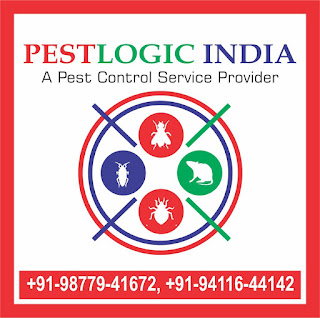Know your Pest - Blow fly
Know your Pest - Blow fly
Blow flies are a family of flies scientifically known as Calliphoridae. These flies are commonly found worldwide and are known for their metallic and iridescent coloration. Here's more information about blow flies:
Appearance:
- Blow flies are medium to large-sized flies with a metallic and shiny appearance. They often have vibrant colors such as green, blue, or copper. This iridescence helps distinguish them from other fly species.
Life Cycle:
- Blow flies undergo complete metamorphosis, consisting of four stages: egg, larva (maggot), pupa, and adult. The larvae are maggots that feed on decomposing organic matter.
Habitat:
- Blow flies are commonly found in various environments, including urban areas, agricultural settings, and natural habitats. They are attracted to carrion, decaying organic material, and feces.
Role in Decomposition:
- Blow flies play a crucial role in the decomposition of animal remains. Adult females lay their eggs on decaying matter, and the hatched larvae (maggots) consume the organic material, accelerating the decomposition process.
Forensic Entomology:
- Blow flies are of particular interest in forensic entomology. Their life cycle and behavior on decomposing bodies are used by forensic investigators to estimate the time of death in criminal investigations.
Feeding Habits:
- Adult blow flies typically feed on nectar, pollen, and other sugary substances. However, they are also known to feed on animal secretions and fluids.
Medical and Veterinary Importance:
- Blow flies can be of concern in medical and veterinary settings as they can transmit bacteria and parasites. In some cases, they may lay eggs in wounds or sores, leading to secondary infections.
Control Measures:
- Controlling blow fly populations involves proper sanitation practices to reduce breeding sites. This includes the prompt removal of carrion, proper waste disposal, and maintaining clean living conditions.
Economic Impact:
- Blow flies can pose economic challenges in agriculture, particularly in livestock settings. Maggots may infest wounds or lesions on animals, leading to health issues and economic losses.
Research and Study:
- Blow flies are subjects of scientific research, particularly in fields such as entomology and forensic science. Understanding their behavior and life cycle contributes to various scientific disciplines.
While blow flies play a vital ecological role in the decomposition process, they can become nuisances in certain situations. Effective control measures involve addressing the conditions that attract and support their populations, especially in areas where their presence may be undesirable, such as homes, farms, and medical facilities.
Pestlogic India - +91-9877941672






.jpeg)
Comments